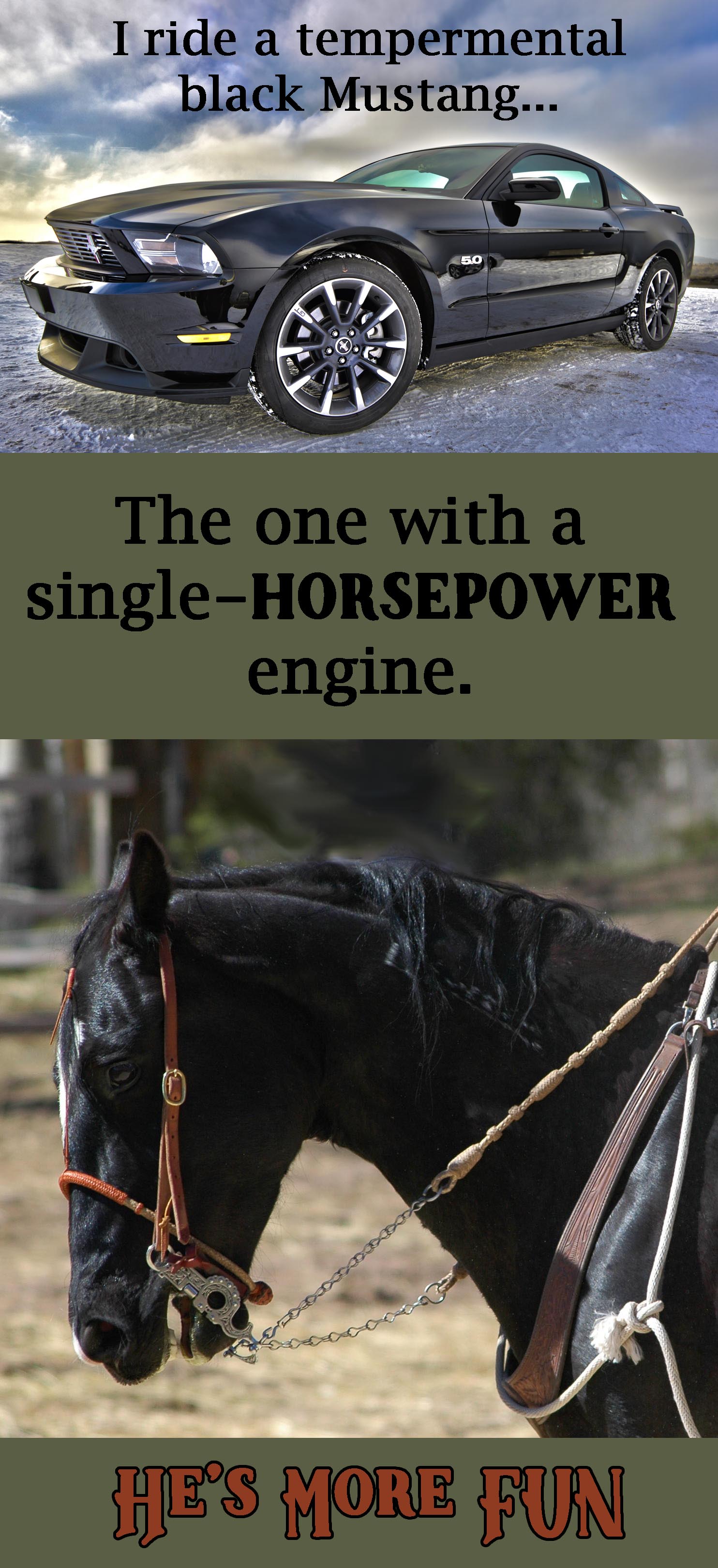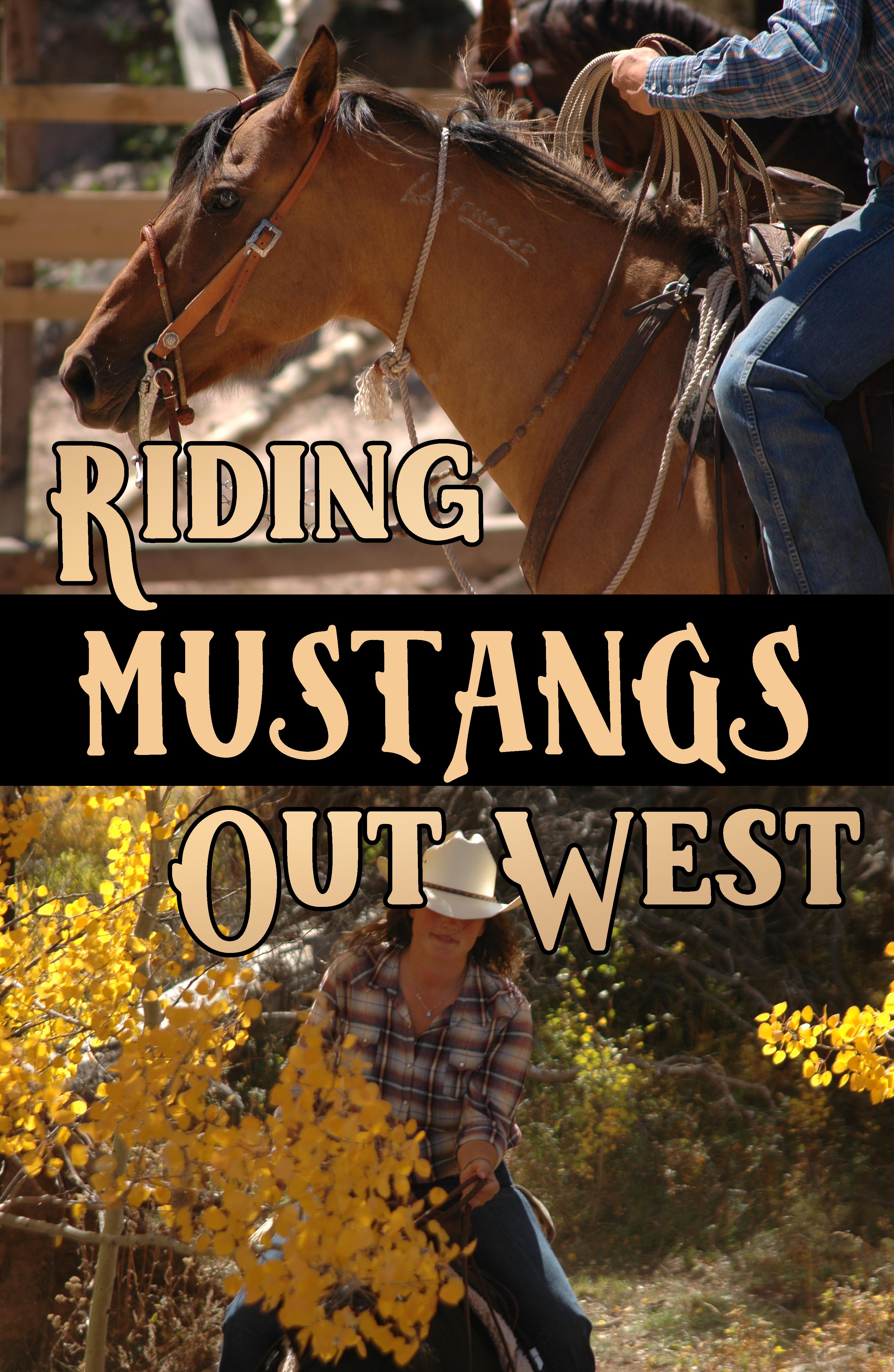
If you try googling the word ‘mustang’, the first page will have nothing but Ford Motor Company-related links and pictures of muscle cars. That’s not a bad thing. Mustang horses are tough, gritty, and one of the best horses to have your back if you get into a scrape, so if I were going around naming cars, I probably would have picked ‘mustang’, too.
Merriam-Webster’s defines it as follows: “a small, hardy, naturalized horse of U.S. western plains directly descended from horses brought in by the Spaniards.” And those first ponies would have stepped foot in the New World thanks to Christopher Columbus and his second trip in 1493. Cortés had enough horses for a breeding program in Mexico by 1525. After a while, enough horses got loose and went feral that this accident started to become something of a breed in and of itself. The Native American tribes readily adopted these horses into their cultures and routines. More and more strays joined the herds, and soon the genetics got all jumbled together. For the most part, these feral horses are smaller, and more compact, with good bones, hard feet, and a tenacious disposition.
 They spread west from the east and north from the south, and by 1553, there were at least 10,000 free-roaming horses in Mexico and America. They loved the tall grasses and wide open spaces of the west. Their hardy feet could handle rough terrain, and their scrappiness meant they could survive on less. Even so, when ranchers and farmers started settling the wild lands, more horses got loose and there started to be too many mouths for not enough grass.
They spread west from the east and north from the south, and by 1553, there were at least 10,000 free-roaming horses in Mexico and America. They loved the tall grasses and wide open spaces of the west. Their hardy feet could handle rough terrain, and their scrappiness meant they could survive on less. Even so, when ranchers and farmers started settling the wild lands, more horses got loose and there started to be too many mouths for not enough grass.
The government decided it was a problem in the 1800s, and everyone agreed. At no point since then has anyone agreed on a good solution to the problem, however. Right now, the overpopulation is monitored by the Bureau of Land Management. When the herds get too big, or the grass gets too sparse, they round up the animals and put them in an adoption program.
The George Family at Latigo has adopted seven mustangs out of Cañon City, Colorado over the years, through the training program run by the inmates of the prison there. These animals are branded with a distinct freeze-brand on their neck, a code of sorts, which tells the story of when they were born, whether they’ve been vaccinated, and so on. Two of these mustangs are still on the ranch, personally owned by Hannah and Spencer, while the rest have found homes with staff members or extended family. We have also purchased other mustangs and mustang stock as the opportunity arose because they make great mountain horses and good guest mounts.
Dude ranchers across the West are proud to participate in maintaining the history and heritage which brought us to the present day, and that includes using and honoring mustangs in our horse programs whenever we can.
If you’re looking for more information on mustangs, we would recommend a documentary movie which came up on Netflix in 2015, “Unbranded”. Four men ride from Mexico to Canada on horses they adopted from the BLM. For those who remember his time as a wrangler at Latigo, you might recognize Lanny Leach as one of the trainers who helps at the outset of the adventure. We’re so proud of him!
Don't forget to check us out on Facebook, Pinterest, & Instagram!
<< Previous Post
>All Posts<